25/04/2024
Grime's Graves Neolithic Flint Mine Opens to the Public
- Visit Grime's Graves and you can descend into the oldest human-made underground space in England
- A new entrance provides access to this subterranean world; and a new exhibition with Neolithic tools tells the story of people from 4,500 years ago
Transporting visitors 4,500 years back in time, a new entrance to one of a vast complex of prehistoric flint mines opens from Saturday (27 April) at Grime's Graves in Norfolk.
A new entrance building and exhibition at the country's oldest human-made underground space – complete with previously unseen flint tools discovered at the site, such as an axe, sickle and circular knife – will reveal the wonders of this ancient industrial hub, the Neolithic equivalent of Yorkshire's cotton mills, or South Wales' steelworks.
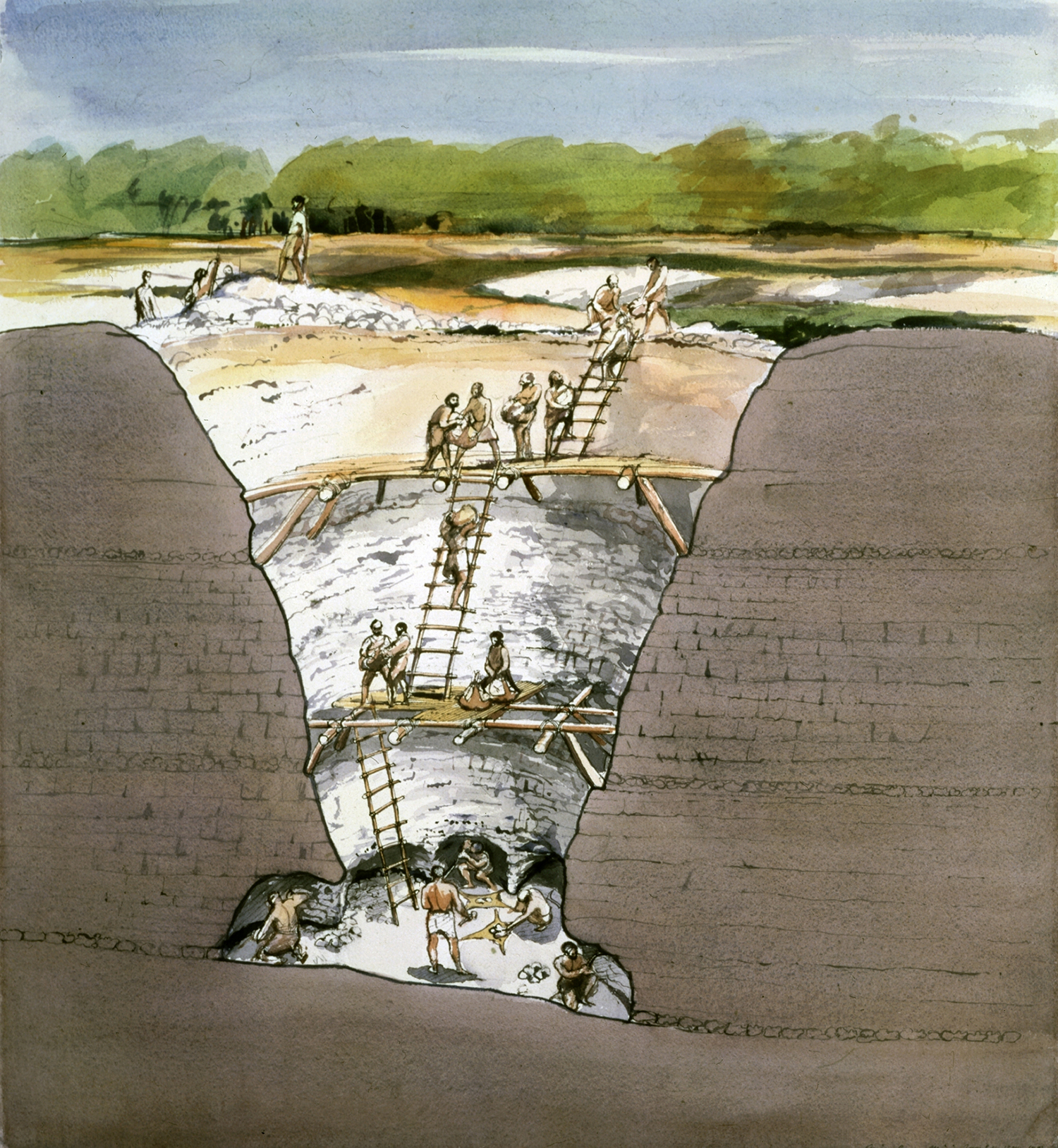
This project has been made possible by funding from The National Lottery Heritage Fund, thanks to National Lottery players.
Standing above ground at Grime's Graves – first named Grim's Graves by the Anglo-Saxons (who believed it was the burial place of the god Woden/Grim) – you would be forgiven for thinking you had landed on another planet, with its strange, grassy lunar landscape.
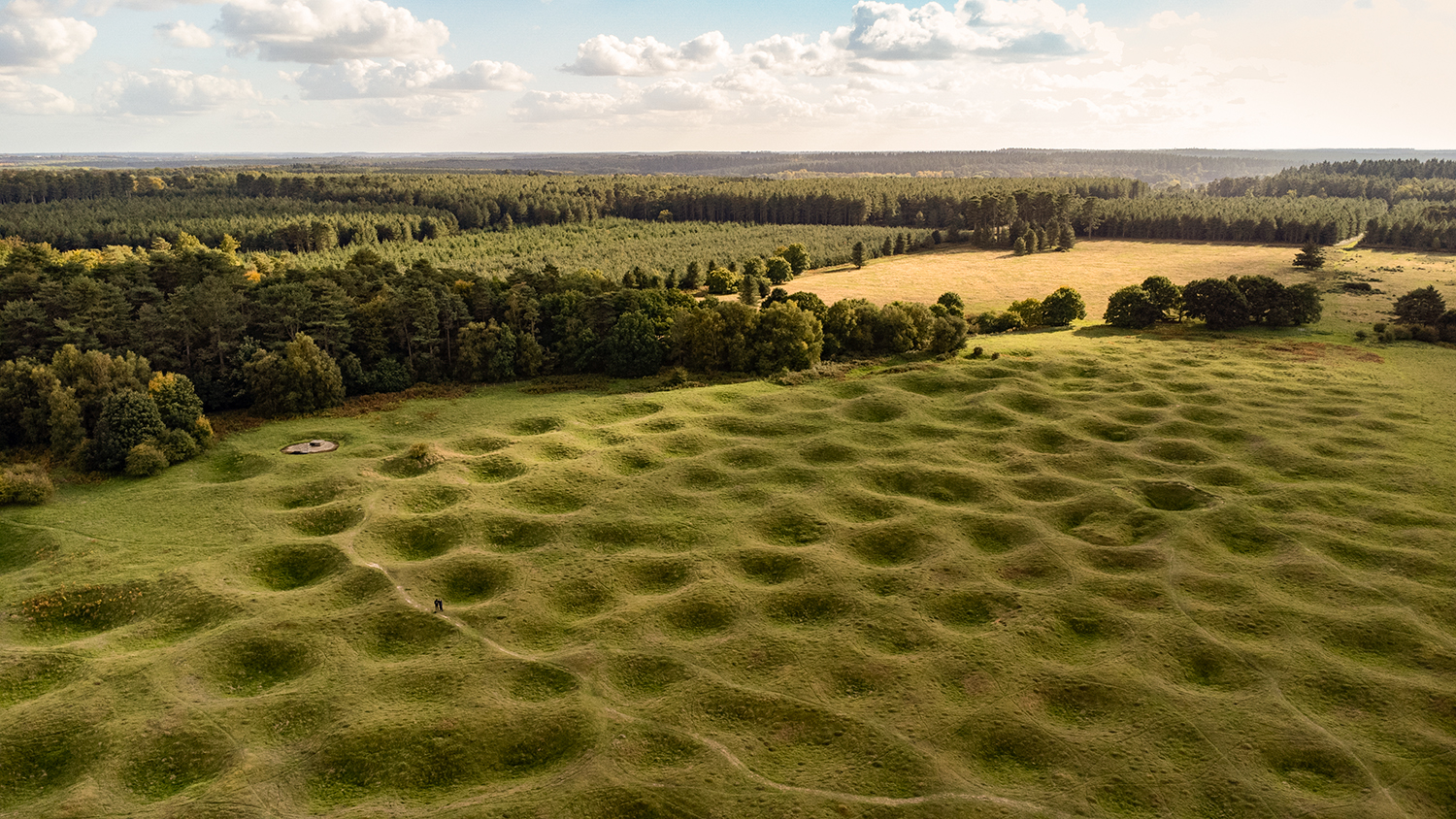
But the undulating ground hints at the historical treasure below.
Around 2,500 BC, about the time many of the stones at Stonehenge were first raised, Neolithic miners used tools made from deer antlers to carve out a labyrinth of tunnels across 430 mine shafts, some up to 13 metres deep.
This was in pursuit of the prized, high-value and jet-black flint which was formed millions of years ago by the debris of sea creatures on what was then an ocean bed.
Described as the 'Swiss Army Knife' of Neolithic life, flint was sought after for its versatility and durability, as well as perhaps its spiritual value. Flint was used to fashion tools, weapons, and ceremonial objects.
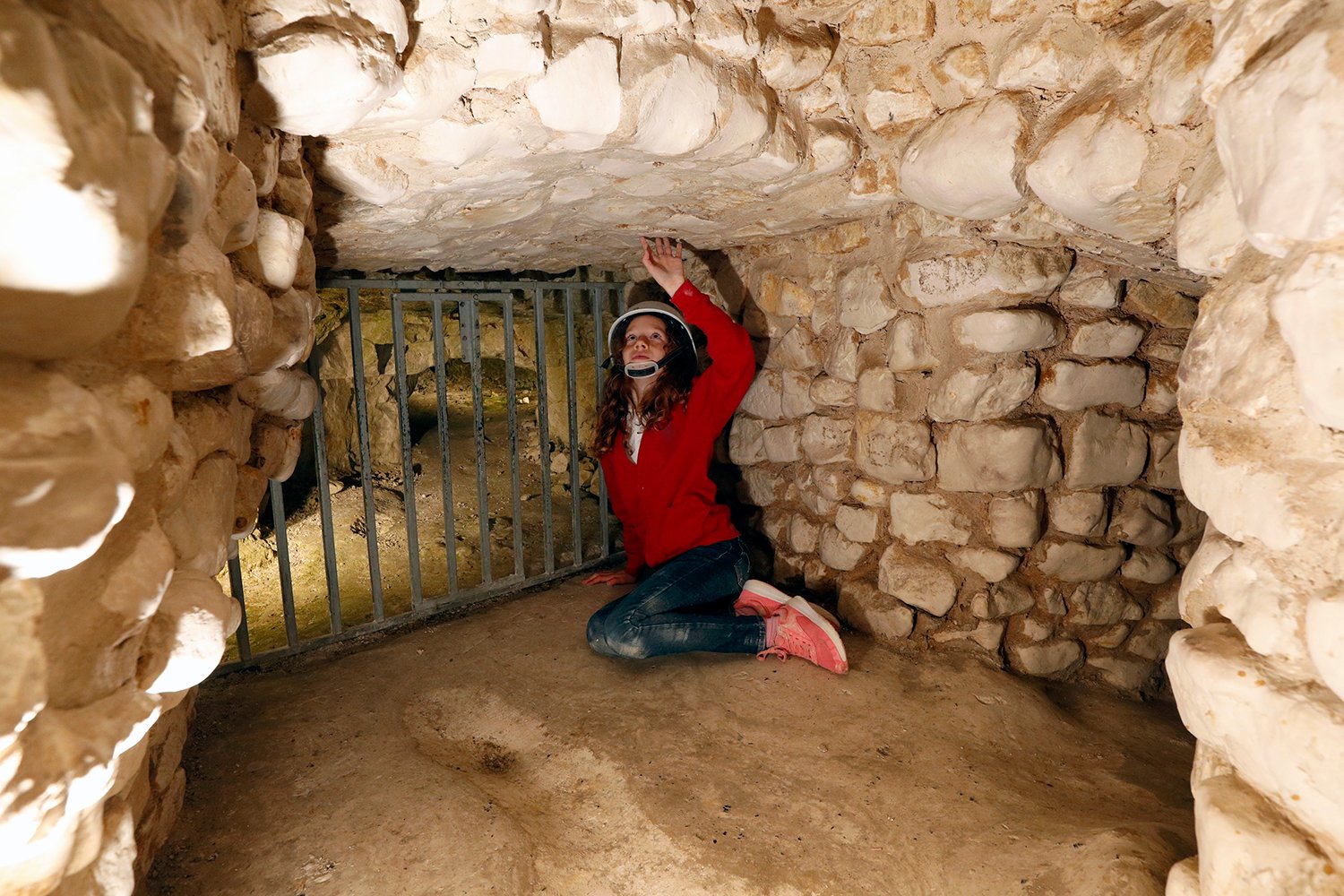
The flint at Grime's Graves was of such good quality that it would have been used for fine, specialised tools. A giant hunk of flint, possibly from the area, has been found as far away as Avebury in Wiltshire.
Now thanks to a new structure over one of the mineshafts, known as Pit 1, visitors are able to easily descend 9 metres (30 ft) below ground into one of the flint mines dug more than 4,500 years ago.
Jennifer Wexler, English Heritage's Properties Historian, said: 'What makes Grime's Graves such a special place is that there are still so many secrets to be unlocked.
'It was not until 1868-70, when one of the pits was excavated, that this was even identified as a Neolithic flint mine. To this day, most of the more than 400 pits remain untouched. Geophysical surveys suggest that the mines covered a much greater area, so we are getting a tantalising glimpse into place full of hidden mystery.
'What I find remarkable is the deep understanding the miners had of their environment. The mines are a feat of great engineering skill, showing sophisticated geological knowledge of the earth.
'The site was in use at the same time that Neolithic people were transforming their world on a massive scale and building impressive monuments across the British Isles, such as Stonehenge and Avebury.
'It's brilliant that visitors will be able to see a few of the remarkable objects we have recently excavated in our new exhibition and then descend deep underground to have this totally otherworldly experience.'
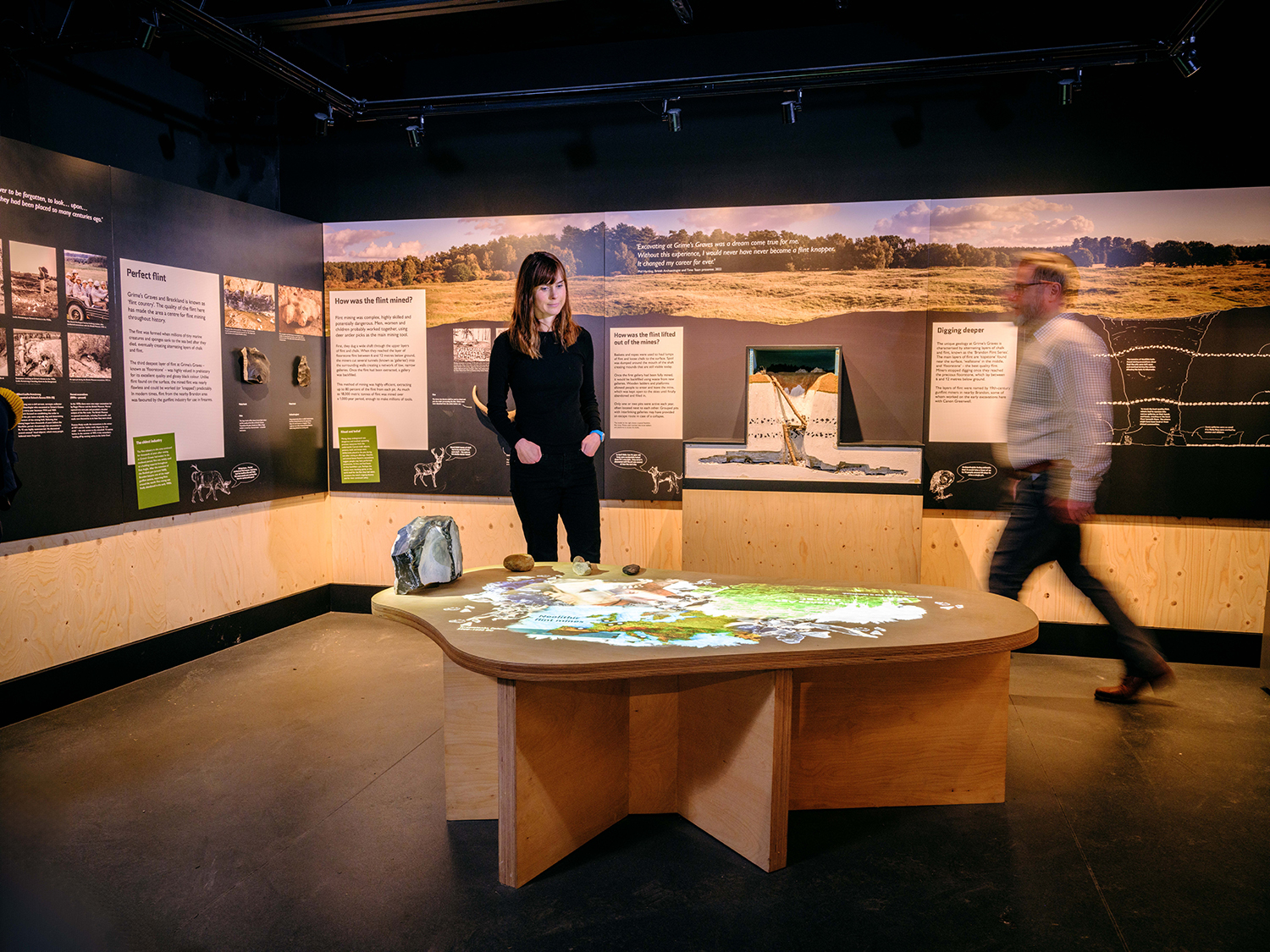
Archaeologist and Time Team's Phil Harding, who voices Grime's Graves new audio guide, said: 'There's a big part of my life at Grime's Graves; I spent five happy summers in the 1970s discovering its wonderful archaeology.
'I hope that what we learnt, some of which has been incorporated in the new improved facilities, can help visitors to understand the site better and appreciate what is not just a magical place but a testament to the skills of the Neolithic civil engineers.'
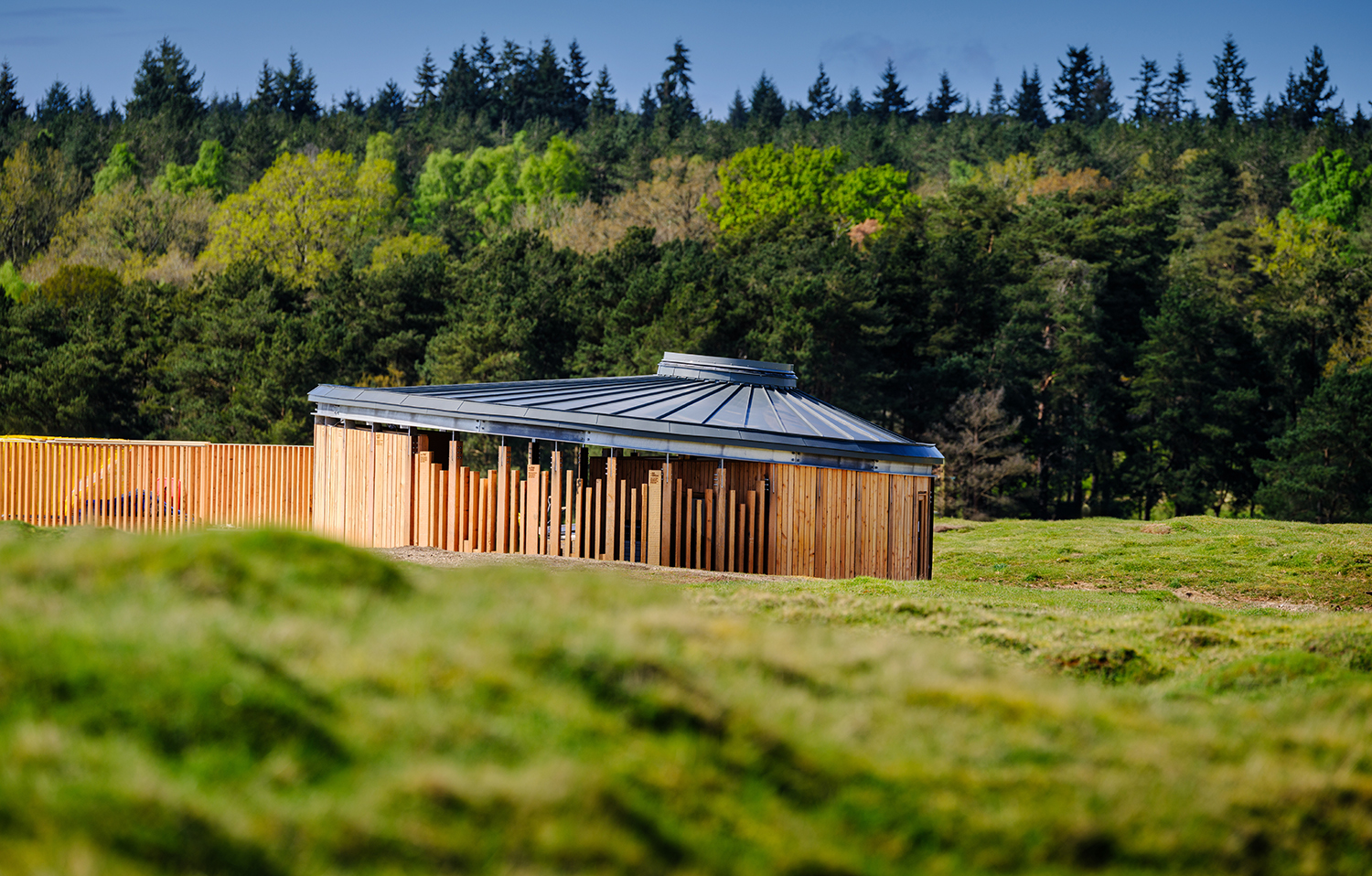
Miners were believed to have been lured to Grime's Graves from far afield for its precious flint, and whole communities, including women, children, and even pet dogs, were involved in the mining process.
Now, a new exhibition will reveal the engineering prowess and geological understanding of Neolithic people, looking at examples of the tools they fashioned from the flint, and showing how they lived, and what they believed.
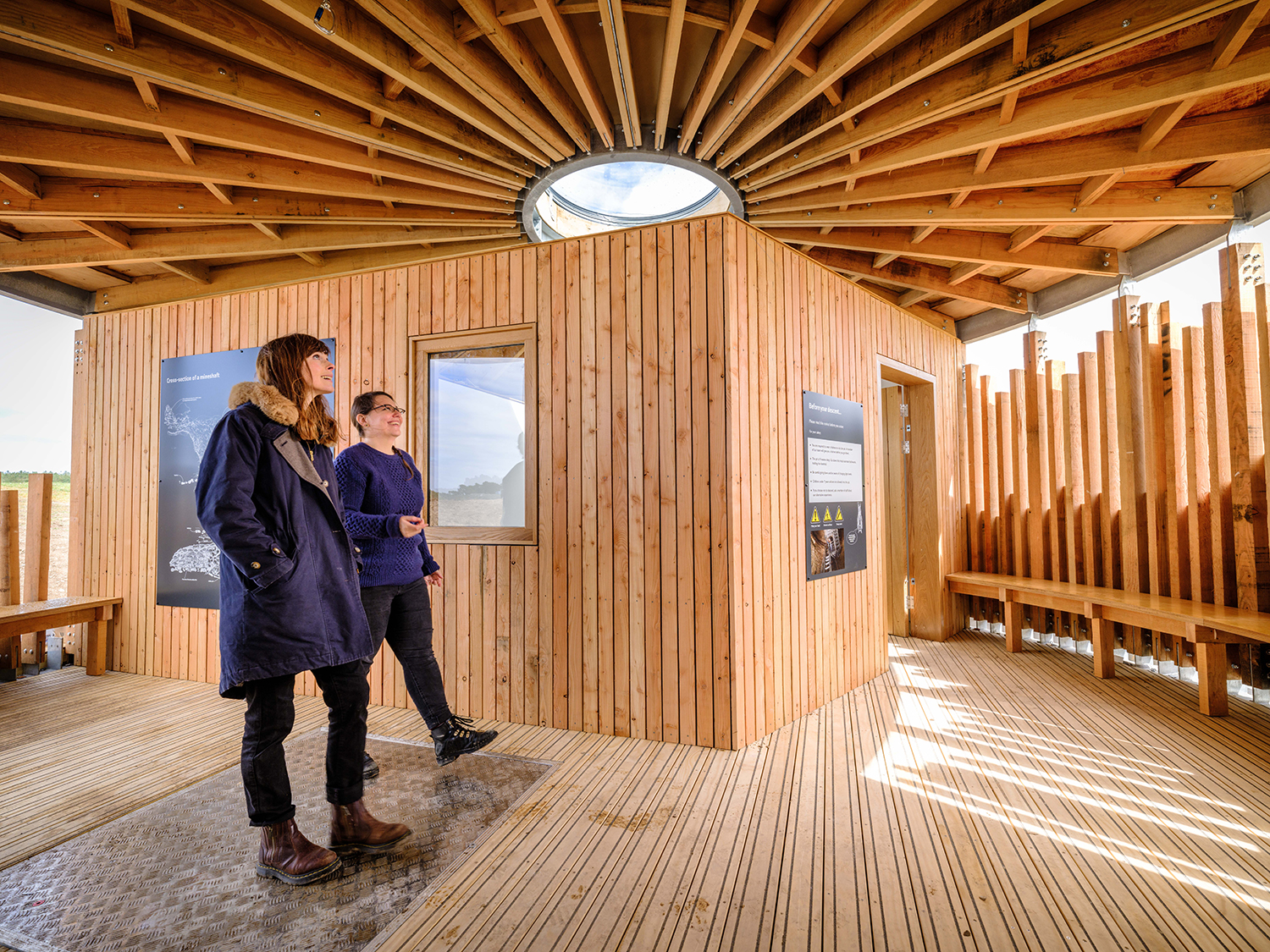
Those who want to venture into a mineshaft will find a more accessible descent into Pit 1.
Below ground, a new film projected onto the pit's walls tells the story of the men, women, and even children who risked daily danger in pursuit of their prize. If you look closely, you can still see the marks scoured into the walls as the flint was hacked out to be taken above ground and transported far and wide.
Set amid the distinctive Breckland heath landscape, Grime's Graves is also a Site of Special Scientific Interest and a habitat for rare plants and fauna and so a new family trail will encourage exploration of the unique landscape, geology, wildlife and plant life.
Grime's Graves re-opening has been made possible thanks to National Lottery players and a grant of over £200,000 from The National Lottery Heritage Fund.
- Greenwell's Pit
A new virtual tour of Greenwell's Pit has been be created as part of the project. Greenwell's Pit, named after Victorian archaeologist Canon William Greenwell, can currently only be accessed during guided tours. The virtual tour in the new exhibition will provide a fully-accessible experience to all visitors to enjoy above ground and online.
- Community Engagement Programme
The National Lottery Heritage Fund has enabled a community engagement programme as part of the new project. The programme will include a Saturday Storytelling Club held in libraries in Norfolk and Suffolk, a newly commissioned Handling Collection of recreated prehistoric artefacts and Community Action Volunteering Days to conserve the landscape at Grime's Graves. There will also be expert-led talks and tours, a film project and the Grime's Graves Flint Festival. Click here for more information.
- Grime's Graves Flint Festival, Sat 15-Sun 16 June 2024
Join us and Time Team's legendary Phil Harding for a weekend of prehistoric fun in collaboration with Stone Club. Enjoy two jam-packed days of Prehistoric workshops, demos, talks, storytellers, tours and much more.